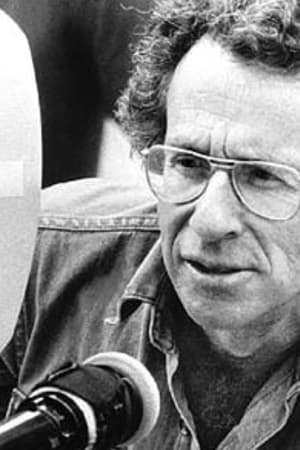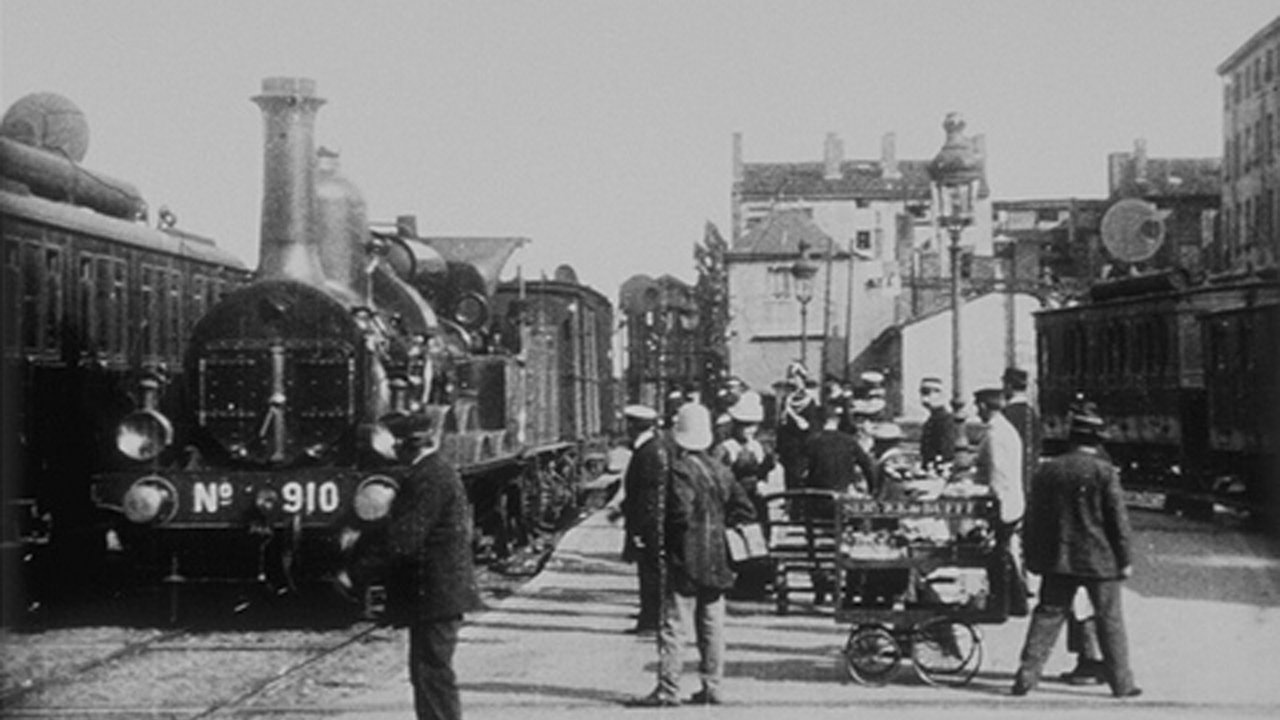

Arrival of a Train at Perrache(1896)
A trains arrives at Perrache station and people disembark.
Movie: Arrival of a Train at Perrache

Arrivée d'un train à Perrache
HomePage
Overview
A trains arrives at Perrache station and people disembark.
Release Date
1896-03-23
Average
6
Rating:
3.0 startsTagline
Genres
Languages:
No LanguageKeywords
Recommendations Movies
 7.6
7.6RE:cycle of the PENGUINDRUM Part 1: Your Train Is the Survival Tactic(ja)
What would you do to save someone you love? All brothers Shoma and Kanba know is that, after collapsing in an aquarium and apparently dying, their terminally ill sister Himari was somehow revived by a Penguin hat that she had wished for. Now they're on an impossible mission, because the price of keeping Himari alive is to find a mysterious object called the Penguindrum, and they'll do anything to save their sister. Anything. As they travel separate paths in their search, they'll have to unravel complex riddles, make alliances with strangers they know they shouldn't trust, and question the very fabrics of time and destiny.
 7.0
7.0Demon Slayer Orchestra Concert-Mugen Train ARC(ja)
Featuring the Tokyo Philharmonic Orchestra, the Demon Slayer concert is the second in the series following a similar event held previously. Fans will be able to enjoy music from the "Demon Slayer: Mugen Train" movie along with animated clips at the showings.
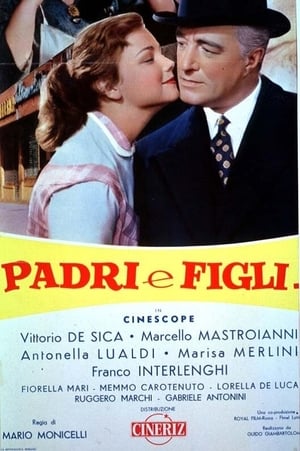 6.7
6.7Fathers and Sons(it)
The adventures of a young couple of high school students: her father is not opposed to their love, but the other, a doctor of prestige, is not at all happy about it.
 5.5
5.5Cordeliers' Square in Lyon(fr)
Pedestrian and horse-drawn vehicles traffic, across the Place des Cordeliers, in Lyon.
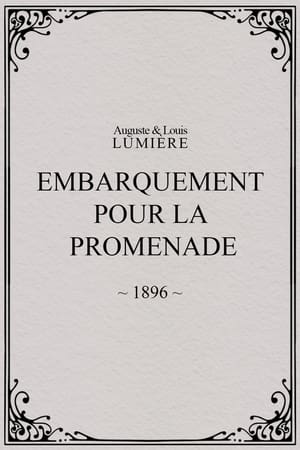 4.7
4.7Embarquement pour la promenade(xx)
Two women and a man come aboard a small boat. On the dock, friends and family are waving goodbye, until the boat moves out of focus.
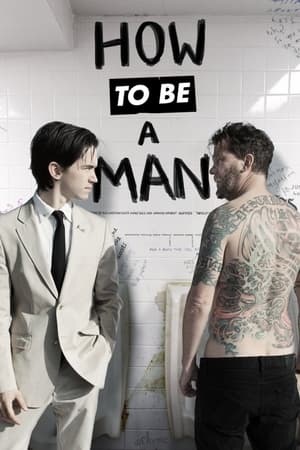 6.4
6.4How to Be a Man(en)
When former comedian Mark McCarthy is faced with a rare form of cancer, he hires a young, impressionable cameraman to document his crude and comical lessons on what it means to be a man for his unborn son.
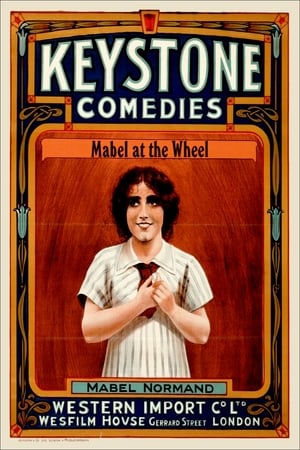 5.6
5.6Mabel at the Wheel(en)
A villain, competing with his rival's race car, kidnaps the rival before the race. Mabel decides to take the wheel in his place.
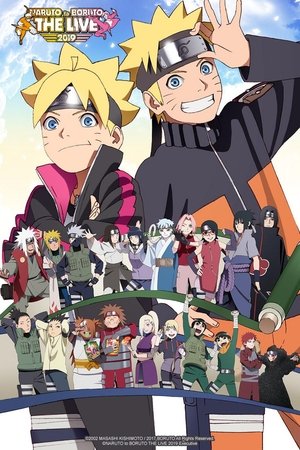 7.5
7.5Naruto to Boruto: The Live 2019(ja)
“NARUTO to BORUTO THE LIVE 2019”, a special event for the 20th anniversary of the first publication of “NARUTO” series in Weekly Shonen Jump!! Featuring live performances by artists performing the theme songs of both “NARUTO” and “BORUTO: NARUTO NEXT GENERATIONS”, anime cast members reading original story episodes, and more.
 7.2
7.2Live Spectacle NARUTO ~Song of the Akatsuki~(ja)
After parting with Sasuke at the Final Valley, Uzumaki Naruto has been away from the village of Konohagakure to further his training. Two and a half years later, he finally returns to the village and takes his mission in Team Kakashi, then he finds the clue on Orochimaru. Naruto leads the team and heads to the place where Orochimaru is in order to save his friend Sasuke. However, little does he know that "Akatsuki" is seeking after his life to acquire the Nine-Tailed sealed in his body.
 6.6
6.6Godzilla: City on the Edge of Battle(ja)
Humanity's desperate battle to reclaim the Earth from Godzilla continues. The key to defeating the King of the Monsters may be Mechagodzilla, a robotic weapon thought to have been lost nearly 20,000 years ago.
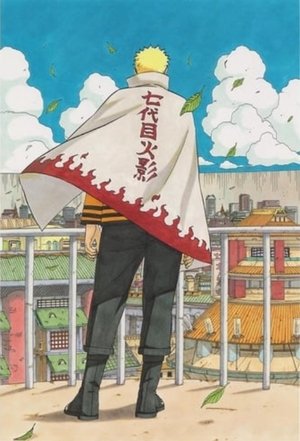 7.4
7.4Naruto OVA 12: The Day Naruto Became Hokage(ja)
Depicts the day that Naruto Uzumaki became the 7th Hokage.
 6.8
6.8The Shaolin Avengers(zh)
Heroism and romance combine in an action-packed martial arts story. When the Shaolin are betrayed by White-Browed Hermit, hotheaded warrior-hero Fong Sai Yuk vows revenge.
 7.3
7.3Naruto OVA 2: The Lost Story - Mission Protect the Waterfall Village!(ja)
Naruto and his friends must get back a jug of stolen holy water from a band of higher class ninjas.
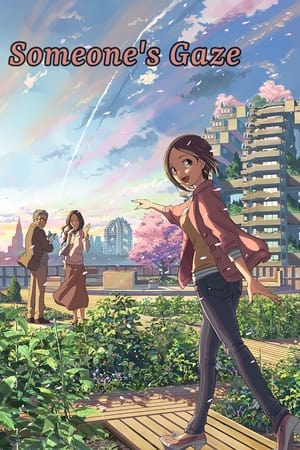 7.1
7.1Someone's Gaze(ja)
Aya Okamura has been working for two years and has begun living on her own for a job opportunity. With her mother working overseas as a doctor, her father is now living alone with the family's longtime pet cat Mii-san. One night, Aya returns from a long day at work, and as she rests on her bed, she reminiscences about the times the family had together. She remembers the sadness she felt when her mom went overseas, and the solace she felt when her father brought home Mii-san to give her comfort. Then, she receives a phone call.
 7.0
7.0Beyond Outrage(ja)
As the police launch a full-scale crackdown on organized crime, it ignites a national yakuza struggle between the Sanno of the East and Hanabishi of the West. What started as an internal strife in Outrage has now become a nationwide war in Outrage Beyond.
 7.1
7.1Naruto Shippuden the Movie: The Lost Tower(ja)
Assigned on a mission to capture Mukade, a missing-nin, Naruto Uzumaki sets out for the once glorious historic ruins of "Ouran", where he pursues and corners the rouge ninja. Mukade's goal is revealed to be a dormant leyline within the ruins; he unleashes the power of the leyline, causing a light to envelop Naruto, sending him into the past, 20 years before the series began. When Naruto awakens, he comes into contact with the Fourth Hokage, Minato Namikaze.
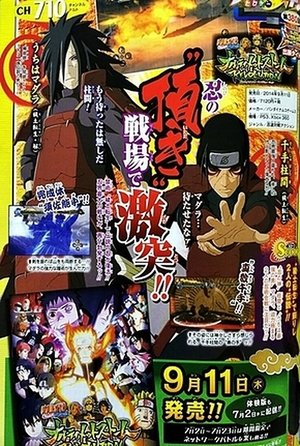 6.5
6.5Naruto OVA 10: Uchiha Madara vs Senju Hashirama(ja)
Naruto Shippūden Ultimate Ninja Storm Generations OVA Madara vs Hashirama is the tenth Naruto OVA. It is distributed as part of Naruto Shippūden: Ultimate Ninja Storm Generations.
 7.6
7.6Naruto OVA 11: Sunny Side Battle(ja)
Sunny Side Battle! is an OVA that was released with Naruto Shippuden: Ultimate Ninja Storm Revolution. It features Itachi making breakfast for Sasuke in their old home.
 7.0
7.0SlugTerra: Return of the Elementals(en)
A new member has joined Eli and the Shane Gang! Junjie, once the protector of the Eastern Caverns, is a master of the slugslinging art of Slug Fu! But even with the power of five slingers, the Shane Gang find themselves in over their heads as they race across The 99 Caverns in search of the Legendary Elemental Slugs. The five Elementals are ancient slugs of great power, and the forbearers of all slugs found in SlugTerra today. In the wrong hands, they could bring Slugterra to the brink of destruction. So when an evil alliance starts hunting down the Elementals, Eli and his friends — old and new — take off in pursuit of the greatest threat their world has ever faced!
 5.1
5.1All Monsters Attack(ja)
Ichiro Miki is a child living in the industrial district of Kawasaki, where his parents' constant struggle to make ends meet often leaves the schoolboy alone. Constantly teased by a bully nicknamed Gabara, his only friends are toy consultant Shinpei and fellow classmate Sachiko. Ichiro turns to escapist dreams of Monster Island where he befriends the equally bullied Minilla.
Similar Movies
 6.7
6.7Workers Leaving the Lumière Factory(fr)
Working men and women leave through the main gate of the Lumière factory in Lyon, France. Filmed on 22 March 1895, it is often referred to as the first real motion picture ever made, although Louis Le Prince's 1888 Roundhay Garden Scene pre-dated it by seven years. Three separate versions of this film exist, which differ from one another in numerous ways. The first version features a carriage drawn by one horse, while in the second version the carriage is drawn by two horses, and there is no carriage at all in the third version. The clothing style is also different between the three versions, demonstrating the different seasons in which each was filmed. This film was made in the 35 mm format with an aspect ratio of 1.33:1, and at a speed of 16 frames per second. At that rate, the 17 meters of film length provided a duration of 46 seconds, holding a total of 800 frames.
 7.1
7.1Nanook of the North(en)
This pioneering documentary film depicts the lives of the indigenous Inuit people of Canada's northern Quebec region. Although the production contains some fictional elements, it vividly shows how its resourceful subjects survive in such a harsh climate, revealing how they construct their igloo homes and find food by hunting and fishing. The film also captures the beautiful, if unforgiving, frozen landscape of the Great White North, far removed from conventional civilization.
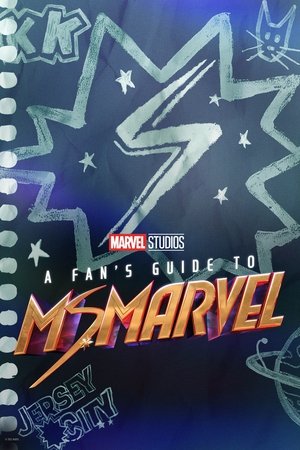 7.0
7.0A Fan's Guide to Ms. Marvel(en)
A documentary short that gives you an exclusive look behind the groundbreaking original series, "Ms. Marvel", from its comic book origins to its development and production as Marvel Studios’ next hit series on Disney+. It features interviews with its award winning filmmaking team and the show’s captivating star, newcomer Iman Vellani.
 0.0
0.0Like a Spiral(fr)
Like a Spiral is a dialogue between Beirut and five women, migrant domestic workers, under the Kafala system. Expressing their belonging to a society in collapse, the women's voices rise through the film's grainy images to denounce their stolen freedom with an inalienable thirst for existence. Their memories dance in the rhythm of oppression. Caught within life's spiral, they lift themselves up to not sink into oblivion.
The Unfinished Journey(en)
A short about American life and history produced for the millennium New Year's Eve celebration.
 0.0
0.0Princess Ball Gown(tr)
Wedding rituals grounded on non-verbal social agreements represent the perception of society in general. Wedding dress is a symbolic part of these rituals. The process that a wedding dress has went through can be considered as an embodiment of the formation of women identity in society. Like most of the women, wedding dressmakers also dream of being a princess once they wear their wedding dress. On the other hand, dressmakers are certainly aware of the fact that they promote the already existing image of women in society because of their job. While they also recognise the truth is way different.
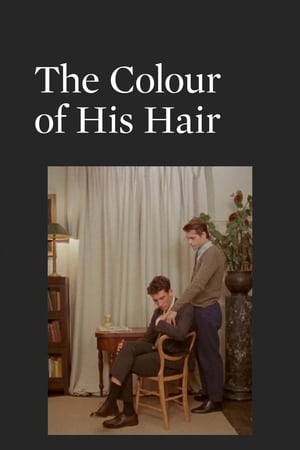 6.4
6.4The Colour of His Hair(en)
Based on an unrealized film script written in 1964 for The Homosexual Law Reform Society, a British organisation that campaigned for the decriminalization of homosexual relations between men, "The Colour Of His Hair" merges drama and documentary into a meditation on queer life before and after the partial legalization of homosexuality in 1967.
Under a Bridge(ja)
In this tape, Ko Nakajima and Video Earth Tokyo interview a homeless man. The subject is initially angry and frustrated, but gradually opens up and shares stories about his life. Under A Bridge was later broadcast on cable television.
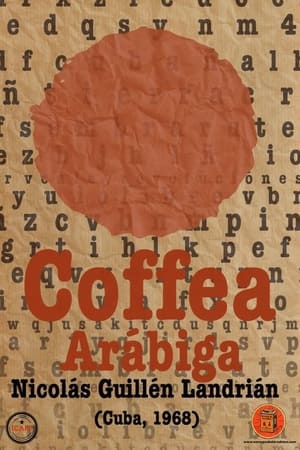 5.2
5.2Arabian Coffee(es)
'Coffea arábiga' was sponsored as a propaganda documentary to show how to sow coffee around Havana. In fact, Guillén Landrián made a film critical of Castro, exhibited but banned as soon as the coffee plan collapsed.
 0.0
0.0The Spirit of the Tsilqot'in People is Hovering over the Supreme Court(en)
The Tŝilhqot’in Nation is represented by six communities in the stunningly beautiful interior of British Columbia. Surrounded by mountains and rivers, the Tŝilhqot’in People have cared for this territory for millennia. With increasing external pressures from natural-resource extraction companies, the communities mobilized in the early 21st century to assert their rightful title to their lands. Following a decision by the Supreme Court of British Columbia in 2007 that only partially acknowledged their claim, the Tŝilhqot’in Nation’s plight was heard in the Supreme Court of Canada. In a historic decision in 2014, the country’s highest court ruled what the Tŝilhqot’in have long asserted: that they alone have full title to their homelands.
 8.2
8.2Night and Fog(fr)
Filmmaker Alain Resnais documents the atrocities behind the walls of Hitler's concentration camps.
 0.0
0.0My Heart Belongs to Daddy(yi)
"My heart belongs to daddy / Majn harts gehert tsum tatn" - the same old love song. But now it is actress Basia Frydman who sings it in Yiddish accompanied by her musicians at home in Kjell Westling's living room. And Tate, that's Basia's lovely old dad Simon, doing his work in a hairdressing salon.
 7.1
7.1The Arrival of a Train at La Ciotat(fr)
A group of people are standing along the platform of a railway station in La Ciotat, waiting for a train. One is seen coming, at some distance, and eventually stops at the platform. Doors of the railway-cars open and attendants help passengers off and on. Popular legend has it that, when this film was shown, the first-night audience fled the café in terror, fearing being run over by the "approaching" train. This legend has since been identified as promotional embellishment, though there is evidence to suggest that people were astounded at the capabilities of the Lumières' cinématographe.
 7.0
7.0Land Without Bread(es)
An exploration —manipulated and staged— of life in Las Hurdes, in the province of Cáceres, in Extremadura, Spain, as it was in 1932. Insalubrity, misery and lack of opportunities provoke the emigration of young people and the solitude of those who remain in the desolation of one of the poorest and least developed Spanish regions at that time.
 5.9
5.9Larisa(ru)
Elem Klimov's documentary ode to his wife, director Larisa Shepitko, who was killed in an auto wreck.
 7.3
7.3Daybreak Express(en)
Set to a classic Duke Ellington recording "Daybreak Express", this is a five-minute short of the soon-to-be-demolished Third Avenue elevated subway station in New York City.
 6.0
6.0The Newcomers(fa)
Kianoush Ayari’s film captures rare scenes of everyday life on the streets of Tehran in the months following the revolution of 1979.


